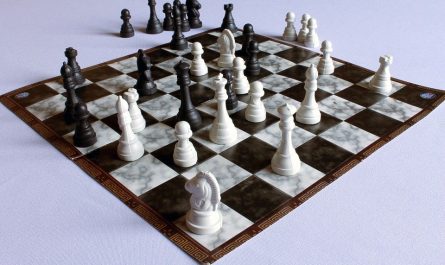The power of a pawn chain lies in its ability to create a cohesive and dynamic pawn structure that influences the entire board and dictates the flow of the game. A pawn chain consists of connected pawns that form a diagonal line, typically extending from one side of the board to the other, so that only one of them is undefended. That pawn is called a base of pawn chain. Understanding and leveraging the power of a pawn chain is a fundamental aspect of chess strategy, as it can significantly impact the course of the game in several ways:
- Central Control: A well-constructed pawn chain, particularly in the center of the board, provides strong central control by occupying key squares and limiting the opponent’s piece mobility. Pawns in the center exert influence over critical squares, making it difficult for the opponent to establish a foothold and launch effective attacks.
- Pawn Structure Stability: A pawn chain enhances the stability of the overall pawn structure by reinforcing each pawn’s position. Connected pawns support one another, making it challenging for the opponent to break through or create weaknesses in the pawn formation. This stability allows players to consolidate their position and maneuver their pieces more freely.
- Creating Outposts: Pawns within a chain can serve as outposts for pieces, providing secure platforms from which they can exert influence and control over key areas of the board. Knights, in particular, thrive on outposts created by well-placed pawns, as they can dominate the board and pose significant threats to the opponent.
- Initiating Pawn Breaks: Despite their solidity, pawn chains can also be used to initiate strategic pawn breaks, where a pawn advances to challenge the opponent’s structure and create new opportunities for piece activity. By carefully timing and executing pawn breaks within a chain, players can disrupt the opponent’s position and open up lines for their pieces.
- King Safety: A pawn chain often contributes to king safety by creating a shield of pawns that provides cover and protection for the king. The interconnected nature of the pawns makes it difficult for the opponent to launch direct attacks against the monarch, allowing players to focus on other aspects of the game without compromising their king’s safety.
- Long-Term Strategic Advantages: A well-established pawn chain can confer long-term strategic advantages by dictating the direction of the game and limiting the opponent’s options. Players who effectively utilize pawn chains can control the tempo of the game, gradually improving their position while restricting the opponent’s counterplay.
Pawn chain Direction
A pawn chain typically consists of a series of connected pawns that extend diagonally across the board. The direction of the pawn chain depends on how the pawns are arranged.
For example, in a classical pawn chain structure like the French Defense or the Caro-Kann Defense, the pawn chain typically extends from one side of the board to the other in a diagonal manner. In the French Defense, for instance, the pawn chain often starts with the e6 pawn followed by the d5 pawn, forming a diagonal line.
How to defend against a pawn chain
Defending against a pawn chain requires strategic thinking and careful planning to neutralize its advantages and create counterplay. Here are some effective strategies to defend against a pawn chain:
- Undermine the Base: Identify the base pawn of the chain and target it for undermining. Look for opportunities to attack and weaken the base pawn, either by exchanging pieces or advancing your own pawns to create pressure.
- Control Key Squares: Focus on controlling key squares around the pawn chain to limit its mobility and prevent further advancement. Place your pieces on strong squares that exert influence over the central and critical areas of the board.
- Create Counterplay: Seek opportunities to create counterplay on the flanks or in other parts of the board where the pawn chain has less influence. Look for weaknesses in your opponent’s position and exploit them to disrupt the stability of the chain.
- Exchange Pieces: Consider exchanging pieces to reduce the pressure exerted by the pawn chain and simplify the position. Look for favorable exchanges that improve your position while neutralizing the opponent’s advantages.
- Pawn Breaks: Look for opportunities to initiate pawn breaks of your own to challenge the pawn chain and create dynamic imbalances in the position. Calculate the consequences of pawn breaks carefully and assess the resulting pawn structure before committing to the break.
In essence, the power of a pawn chain lies in its ability to shape the dynamics of the game, control key areas of the board, and provide a solid foundation for strategic maneuvers. By understanding how to construct and leverage pawn chains effectively, players can enhance their positional understanding and gain a competitive edge over their opponents in the game of chess.

